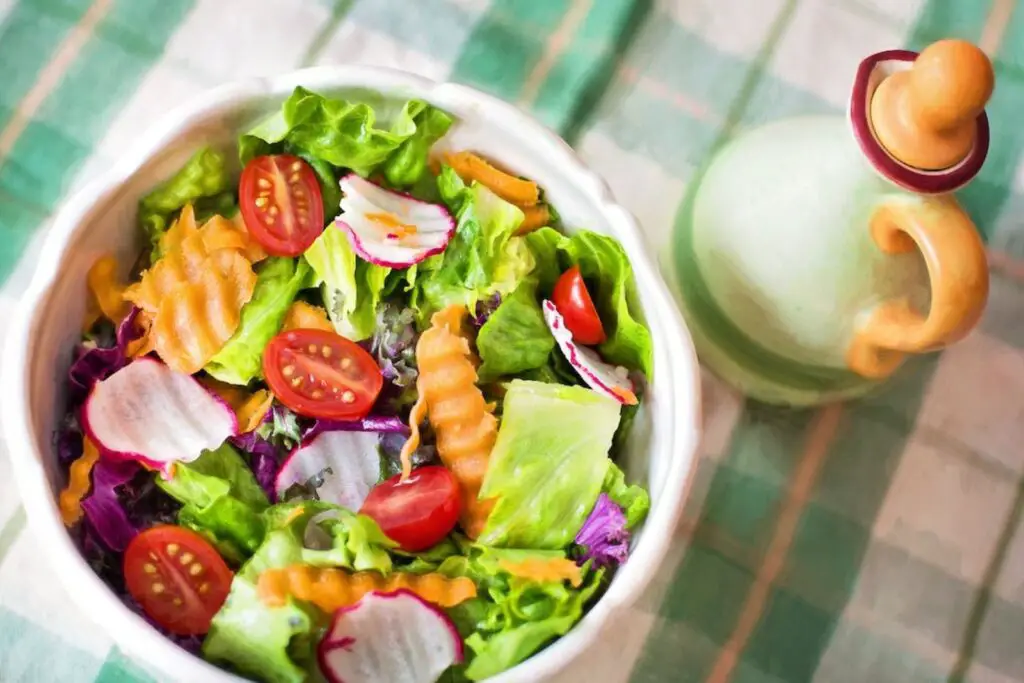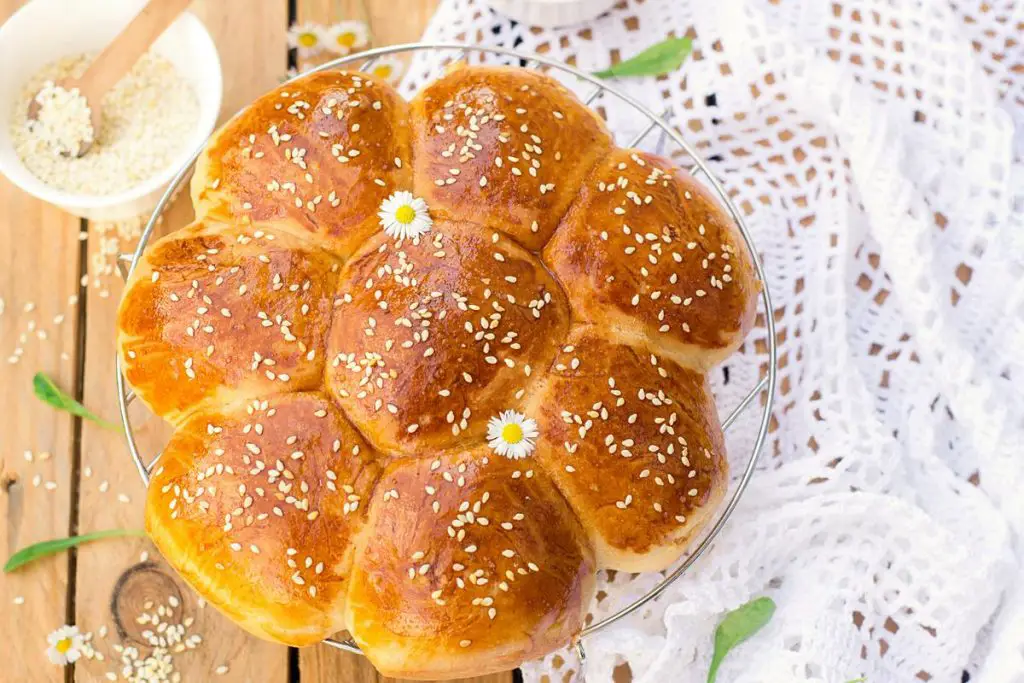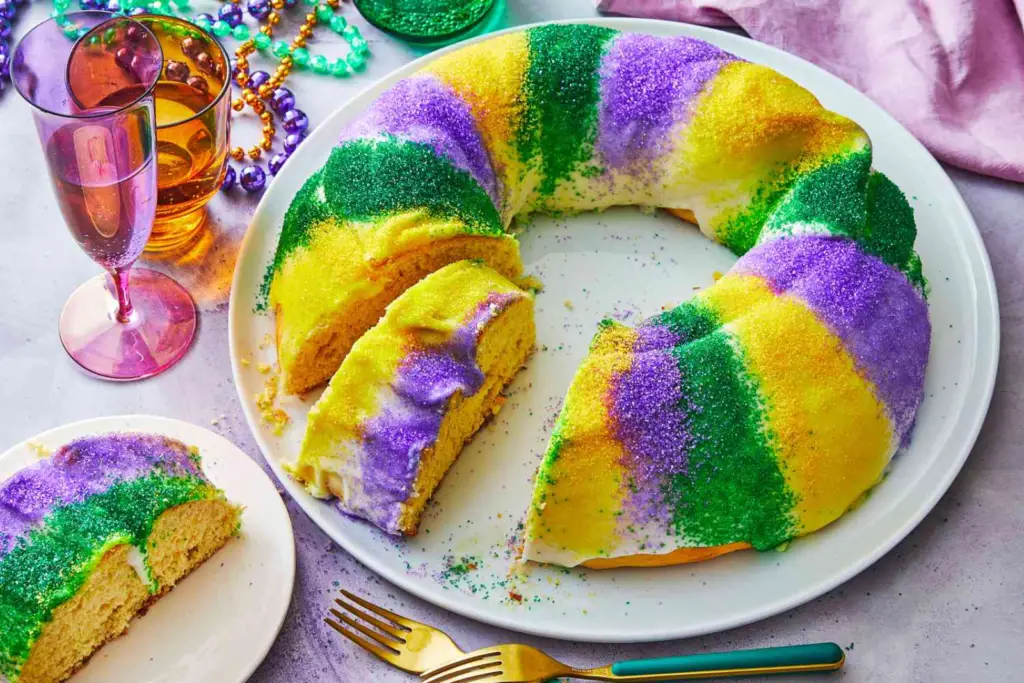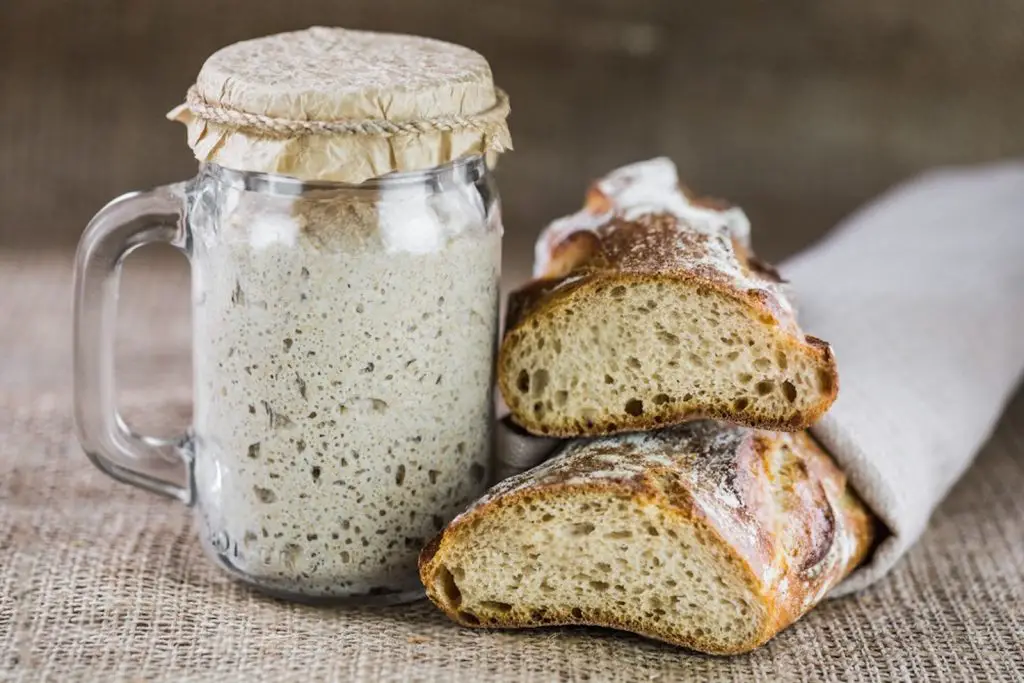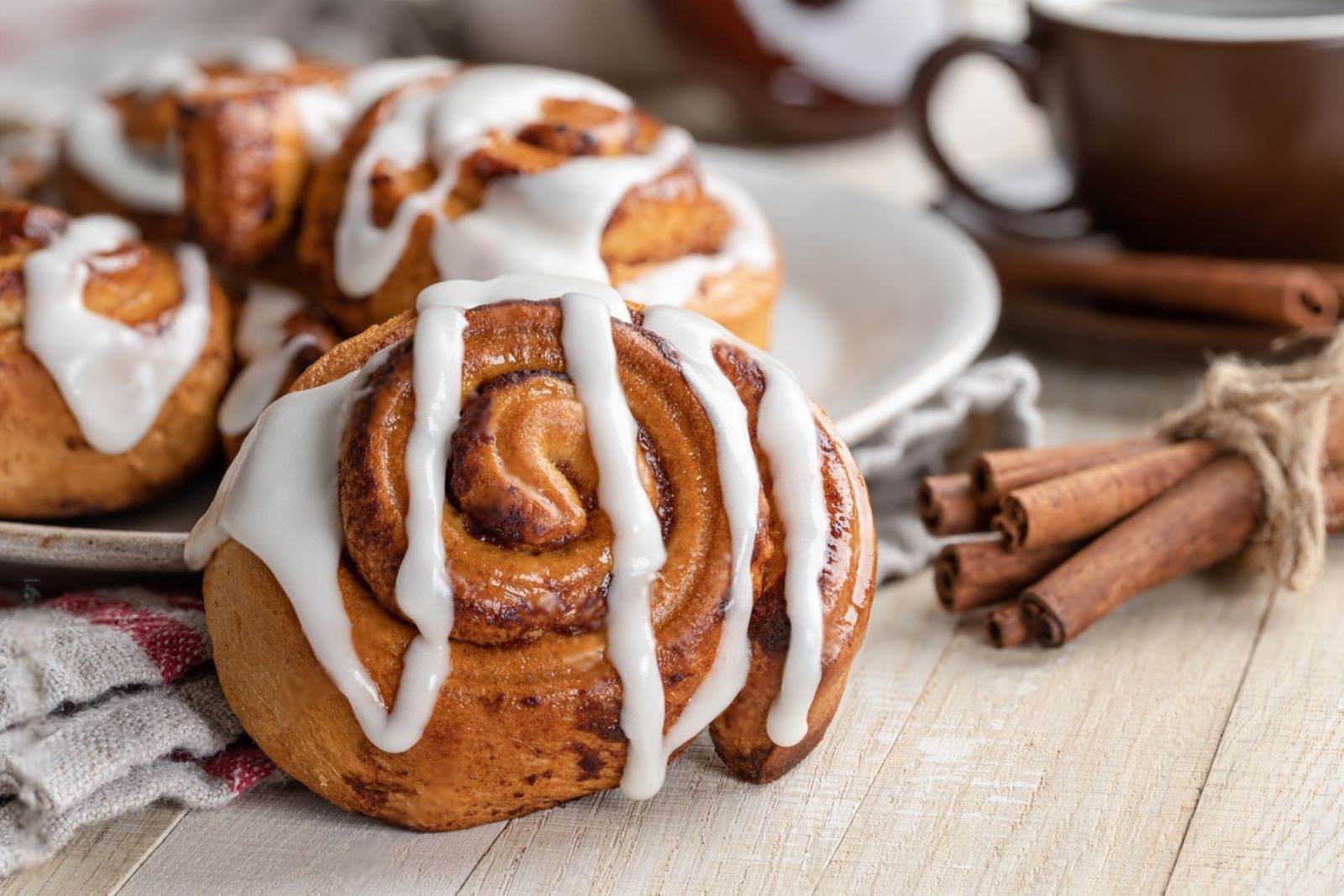
Cinnamon buns, with their irresistible aroma and swirls of sweet cinnamon, are a beloved treat that brings warmth and comfort to any occasion. These soft and fluffy pastries, typically topped with a luscious glaze or cream cheese frosting, are a delightful indulgence for breakfast or dessert. Whether enjoyed fresh out of the oven or reheated for a quick snack, cinnamon buns never fail to satisfy. However, if you find yourself with a surplus of cinnamon buns or want to prepare them in advance for future enjoyment, freezing is an excellent option. Freezing cinnamon buns allows you to preserve their freshness and flavors, ensuring that you can indulge in these delectable treats whenever the craving strikes. In this guide, we will explore the proper techniques for freezing cinnamon buns, including wrapping and storage methods, so you can have a stash of ready-to-bake or ready-to-thaw buns on hand for a warm and gooey delight. Join us as we uncover the secrets of freezing cinnamon buns and discover the convenience of having this irresistible treat available whenever your sweet tooth calls.
Here are the simple steps to freeze cinnamon buns:
Step 1: Select Freshly Baked Cinnamon Buns
Choosing freshly baked cinnamon buns is crucial for achieving the best results when freezing them. When the cinnamon buns are still warm from the oven, they are at the peak of their freshness, flavor, and texture. This is because the warmth helps to enhance the aroma and softness of the dough, making them even more enjoyable to eat.
Selecting cinnamon buns that are freshly baked also ensures that they haven’t been sitting out for an extended period, which could lead to a decline in quality. Freshly baked cinnamon buns are less likely to have become stale or hardened, which can affect their taste and texture when thawed later.
Additionally, the flavors of the cinnamon, sugar, and any other fillings are at their most vibrant and pronounced when the buns are freshly baked. Freezing them at this stage helps to lock in those flavors, allowing you to enjoy the same delightful taste when you decide to thaw and reheat them.
By choosing freshly baked cinnamon buns, you set the foundation for a successful freezing process. It ensures that you are starting with cinnamon buns that are at their best quality, maximizing your enjoyment when you eventually consume them.
Step 2: Allow the Buns to Cool
After selecting freshly baked cinnamon buns, it’s crucial to let them cool completely before proceeding with the freezing process. Allowing the buns to cool down to room temperature serves two important purposes.
Firstly, cooling the cinnamon buns helps to prevent condensation from forming during the freezing process. When warm or hot buns are immediately placed in the freezer, the temperature difference between the buns and the freezer environment can cause moisture to accumulate on the surface. This condensation can lead to ice crystals forming on the buns, affecting their texture and potentially making them soggy when thawed. By cooling the buns to room temperature, you minimize the risk of excess moisture and maintain their desired texture.
Secondly, cooling the buns provides a safer handling process. Freshly baked cinnamon buns can be quite delicate and soft when they are hot. Moving them while they are still warm can result in deformation or damage to their shape. Allowing them to cool on a wire rack ensures proper air circulation around the buns, facilitating even cooling and preventing any potential sticking to surfaces.
By patiently allowing the cinnamon buns to cool down completely, you ensure that they are at an ideal temperature for the subsequent steps of wrapping and freezing. This step helps maintain the buns’ quality and texture throughout the freezing and thawing process, resulting in a more enjoyable eating experience when you’re ready to enjoy them later.
Step 3: Wrap the Cinnamon Buns Individually
Once the cinnamon buns have cooled to room temperature, it’s time to protect them for long-term freezing. Wrapping each cinnamon bun individually in plastic wrap is an essential step to maintain their freshness and prevent freezer burn.
By wrapping the cinnamon buns tightly in plastic wrap, you create a barrier that helps to minimize contact with air and moisture. This is important because exposure to air can lead to freezer burn, which can negatively impact the taste, texture, and overall quality of the buns. Freezer burn occurs when moisture on the surface of the buns evaporates and then re-freezes, causing the texture to become dry, tough, and sometimes even discolored.
Individual wrapping also prevents the cinnamon buns from sticking together. When frozen in a batch without separation, the buns can easily fuse together, making it difficult to thaw and separate them later. Wrapping each bun individually ensures that they remain separate and can be easily accessed and thawed individually, as needed.
To wrap the cinnamon buns, place each bun in the center of a piece of plastic wrap. Pull the corners of the plastic wrap up and over the bun, covering it completely. Gently press and mold the plastic wrap around the bun to create a tight seal, ensuring that no air can penetrate.
By individually wrapping the cinnamon buns, you provide them with an extra layer of protection against freezer burn and maintain their freshness and quality for an extended period. This step makes it easier to handle and store the buns, and ensures that they can be easily thawed and enjoyed individually when the time comes.
Step 4: Place the Wrapped Buns in a Freezer Bag
After individually wrapping each cinnamon bun, transfer them to a freezer bag for additional protection during freezing. Placing the wrapped buns in a freezer bag helps to further minimize the exposure to air and potential moisture, ensuring the highest possible quality when thawed.
When selecting a freezer bag, opt for one that is specifically designed for freezer storage. These bags are thicker and more durable, providing better insulation and protection against freezer burn. It’s important to choose a bag that is appropriately sized to accommodate the number of cinnamon buns you are freezing.
Once you have your freezer bag ready, gently place the individually wrapped cinnamon buns inside. It’s important to handle them with care to prevent any damage or misshaping. Try to arrange them in a single layer or in a way that minimizes any stacking or crushing, which could affect their appearance and texture.
Before sealing the bag, it’s crucial to squeeze out as much air as possible. Air contains moisture and can contribute to the formation of ice crystals, which can lead to freezer burn. Pressing the bag gently while sealing it helps remove excess air, creating a more protective environment for the cinnamon buns.
Ensure that the bag is tightly sealed to maintain a proper barrier against air and moisture. This helps to preserve the freshness, taste, and texture of the cinnamon buns throughout the freezing process.
By placing the individually wrapped cinnamon buns in a freezer bag and removing excess air, you take an extra precautionary step to prevent freezer burn and maintain the buns’ overall quality. This method of storage helps to safeguard the buns from potential damage, ensures easier organization in the freezer, and allows for convenient retrieval when you’re ready to enjoy them.
Step 5: Label the Bag
Labeling the freezer bag that contains the frozen cinnamon buns is an important step to keep track of their storage time and ensure they are consumed within the recommended time frame.
Using a marker or a label, write the date on the freezer bag. This date represents the day the cinnamon buns were frozen. By indicating the date, you create a reference point for when the buns should ideally be consumed.
Freezing cinnamon buns can extend their storage life, but they still have a recommended timeframe for optimal quality. Typically, cinnamon buns can be stored in the freezer for up to three months while maintaining their taste and texture. However, this can vary depending on factors such as the recipe, ingredients, and storage conditions.
With the date clearly labeled on the bag, you can easily identify the oldest batch of frozen cinnamon buns in your freezer. This allows you to prioritize their consumption, ensuring that you enjoy them before the recommended storage time expires.
By taking a moment to label the freezer bag with the date, you establish an organized system for managing your frozen cinnamon buns. This simple step ensures that you consume them within the recommended storage time, maximizing their quality and your enjoyment when you decide to indulge in them.
Step 6: Freeze the Cinnamon Buns
After properly preparing the cinnamon buns for freezing, carefully place the sealed freezer bag containing the buns into the freezer. This step ensures that the buns freeze evenly and maintain their quality during storage.
When choosing a location in the freezer, it’s essential to find a flat surface where the bag won’t be disturbed or crushed by other items. Placing the bag on a flat surface helps to maintain the shape and integrity of the cinnamon buns. Avoid overcrowding the freezer area with other items that could potentially press against the bag and cause damage to the buns.
Ideally, position the bag in a way that allows for proper airflow around it. This ensures that the cold air circulates evenly, promoting uniform freezing and preventing any areas from thawing or developing ice crystals.
It’s also important to note that the freezer should be set to a sufficiently low temperature to freeze the cinnamon buns properly. The recommended freezer temperature is typically below 0°C (32°F), but refer to your freezer’s specific guidelines for optimal results.
By placing the sealed freezer bag with the cinnamon buns in a flat and undisturbed area of the freezer, you ensure that they freeze evenly and maintain their desired texture and taste. This step is essential for preserving the quality of the buns and allows for convenient storage and retrieval when you’re ready to enjoy them.
Step 7: Store in the Freezer
Once the cinnamon buns are properly frozen, it’s important to note that they can typically be stored in the freezer for up to three months. This recommended storage period ensures that the cinnamon buns retain their best quality, taste, and texture.
While freezing helps to preserve the freshness of the cinnamon buns, it’s important to consume them within a reasonable timeframe to enjoy them at their peak. After three months, the buns may start to degrade in quality. The texture may become less fluffy, and the flavor could diminish over time.
To ensure the best taste and experience when consuming the frozen cinnamon buns, it’s recommended to enjoy them within the three-month window. This timeframe strikes a balance between prolonged storage and maintaining the buns’ desired attributes.
It’s worth mentioning that individual freezing and proper packaging can contribute to extending the storage life of the cinnamon buns. When wrapped tightly and stored in a sealed freezer bag, the buns are better protected against air, moisture, and potential freezer burn, which can help maintain their quality for a longer period.
However, it’s important to keep in mind that the exact storage time can vary depending on factors such as the specific recipe, ingredients used, and storage conditions. It’s always a good idea to check the buns for any signs of freezer burn or changes in texture or flavor before consuming them, especially if they have been stored for an extended period.
By adhering to the recommended storage time of up to three months, you ensure that the frozen cinnamon buns remain in their best condition and provide the most delightful experience when you decide to thaw and enjoy them.
Step 8: Thaw and Reheat
When the time comes to indulge in your frozen cinnamon buns, it’s important to properly thaw and reheat them to restore their warmth, softness, and deliciousness. Here’s how to do it:
- Remove the frozen cinnamon buns from the freezer: Take the sealed freezer bag with the cinnamon buns out of the freezer. Handle them with care to avoid any damage or misshaping.
- Thaw at room temperature: Place the frozen cinnamon buns on a plate or a wire rack and let them thaw at room temperature. This process allows them to gradually thaw without being exposed to high heat, which can lead to uneven thawing or undesirable texture changes. The time required for thawing can vary depending on the size and thickness of the buns, but it typically takes a few hours.
- Reheat to restore warmth and softness: Once the cinnamon buns have thawed, you can reheat them to bring back their desirable warmth and softness. There are a couple of methods you can use:
- Oven: Preheat your oven to a low temperature, around 150°C (300°F). Place the thawed cinnamon buns on a baking sheet and warm them in the oven for a few minutes until they are heated through. Be careful not to overheat them, as this can lead to dryness.
- Microwave: If you prefer a quicker option, you can use a microwave. Place the thawed cinnamon buns on a microwave-safe plate and heat them in short bursts of 10 to 15 seconds at a time. Check their warmth and softness after each burst until they reach your desired level of warmth.
By following these thawing and reheating instructions, you ensure that your frozen cinnamon buns are brought back to life and enjoyed at their best, providing a delectable experience that makes the freezing process worthwhile.
Other related questions
Can you refreeze cinnamon buns?
No, it is not recommended to refreeze cinnamon buns once they have been thawed. Refreezing can negatively affect their quality, taste, and texture due to potential moisture loss and freezer burn. It is best to consume cinnamon buns after they have been thawed and reheated, rather than attempting to refreeze them.
How do I know if the cinnamon buns have gone bad after being frozen?
To determine if frozen cinnamon buns have gone bad, look for signs of freezer burn, such as dry or discolored areas on the surface. Additionally, check for any unusual odors, off flavors, or significant changes in texture. If the buns appear significantly altered or exhibit any signs of spoilage, it is best to discard them to avoid potential foodborne illnesses.
Can I freeze cream cheese frosting on cinnamon buns?
Yes, you can freeze cinnamon buns with cream cheese frosting. However, it’s important to note that the texture and consistency of the frosting may change slightly after freezing and thawing. To maintain the best quality, it’s recommended to freeze the cinnamon buns without the frosting and add it after reheating when you are ready to serve them. This ensures that the cream cheese frosting retains its smoothness and creamy texture.
Are there any special considerations for freezing glaze on cinnamon buns?
Yes, there are special considerations for freezing glaze on cinnamon buns. Some types of glazes, particularly those made with cream or dairy-based ingredients, may not freeze and thaw well. They can separate or become watery when frozen and then thawed. To maintain the quality of the glaze, it is recommended to freeze the cinnamon buns without the glaze and add it after thawing and reheating the buns. This ensures that the glaze retains its desired consistency and texture.
Can I freeze cinnamon buns uncooked?
Yes, you can freeze uncooked cinnamon buns. Freezing uncooked cinnamon buns allows for convenient preparation ahead of time. After shaping the buns, you can place them on a baking sheet lined with parchment paper and freeze until firm. Once frozen, transfer them to airtight freezer bags or containers for long-term storage. When ready to bake, you can remove the desired number of frozen cinnamon buns, let them thaw and rise, and then bake them according to your recipe instructions.

